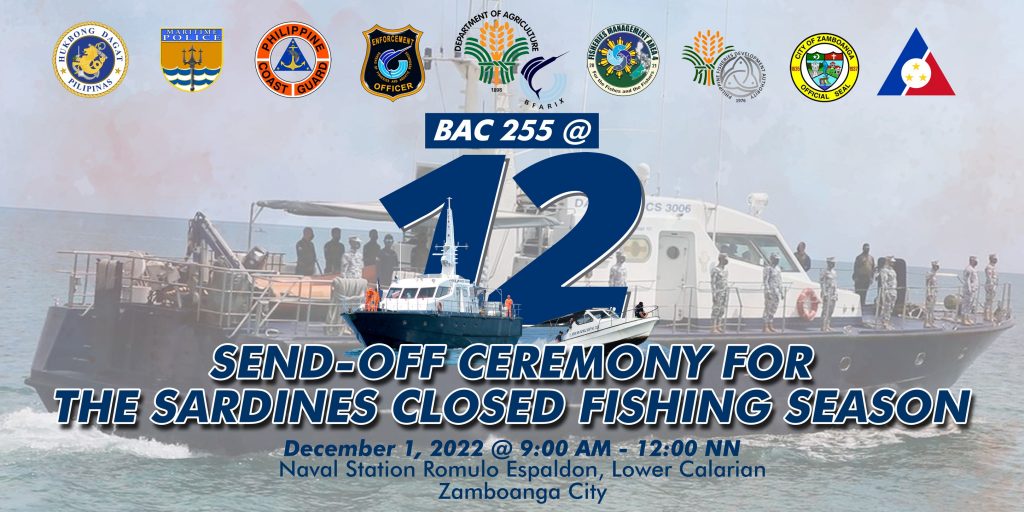Sardines have since been plagued by many challenges for many years. Decreasing catch rates, increasing juvenile catch, decreasing productivity, post-harvest losses, illegal fishing, and poverty among sardine fisherfolk are just a few of the challenges that hound the industry.
In 2014, the government, through the DA-BFAR, the local government units and other national agencies, implemented BFAR Administrative Order No. 255 establishing Closed Season for the conservation of sardines in East Sulu Sea, Basilan Strait and Sibuguey Bay every December 1 to March 01 annually, in an effort to ensure the sustainable production of this precious resource.
The closed fishing season is a conservation measure which protects valuable fish species during their spawning period and allows juveniles to grow and mature, and fish stocks to replenish, thereby ensuring the abundance and productivity of our marine resources for the years to come.
Data show that the closed fishing season has been effective not only in conserving sardines, but also in enriching the waters of the Zamboanga Peninsula. According to the monitoring of the Department of Agriculture-Bureau of Fisheries and Aquatic Resources’ National Stock Assessment Program (NSAP) of at least 33 landing sites in the Zamboanga Peninsula from 2016-2020, the total volume of monitored landed catch in the area, composed mostly of the sardine species Sardinella lemuru (locally known as tamban), has continually increased by around 10.75% growth per year, with the highest increase observed in 2020, where it recorded a growth of 28% resulting in a total volume of 357,804.41 metric tons. Of the total 1,398,342.40 metric tons landed catch in the Zamboanga Peninsula recorded by NSAP during the five-year period, 989,029.13 metric tons or 70.73% is Sardinella lemuru.
In Zamboanga Peninsula, there are 8 species of sardines landed, namely: Sardinella lemuru, Amblygaster sirm, Sardinella gibossa, Dissumeria acuta, Sardinella fimbriata, Herklotsichthys quardimaculatus, Sardinella albella and Escualosa albella. NSAP data validates that the sardine species dominant in Zamboanga Peninsula is Sardinella lemuru at 97.89% of the total sardine landed catch in the area.
The trend of sardines species landed in Zamboanga Peninsula is increasing from 2016 to 2020 with an average yearly increase of 19.66%. Highest observed increase in landing is in the year 2020 at 42.87% or 298,306.89 metric tons, a difference of 89,515.57 metric tons from the recorded catch of 2019.
Sardines make up around 15% of total fish catch and is one of the most accessible protein sources for Filipinos. A large portion of the production comes from East Sulu Sea/Sulu Archipelagic Waters (Fishery Management Area 4). Other major fishing grounds are Ragay Gulf-Ticao Pass-San Bernardino Strait, Bohol Sea, Moro Gulf-Illana Bay, Sibuguey Bay, and Visayan Sea. (Source: National Sardine Management Plan 2020-2025)
Around 68% of production comes from the commercial fisheries sector while around 32% comes from the municipal fisheries sector. Approximately 48,000 workers are employed in the commercial fisheries and the allied canning/bottling industries that target small pelagics such as sardines. (Source: Philippine Statistics Authority, National Sardine Management Plan 2020-2025)
Anent with this, BFAR IX will be conducting its 12th Year Send-Off Ceremony for the Sardines Closed Fishing Season come this December 01, 2022 in Zamboanga City. (FIU)
Approved for dissemination:
AL-ZATH K. KUNTING, RFP (SGD)
OIC-Regional Director

